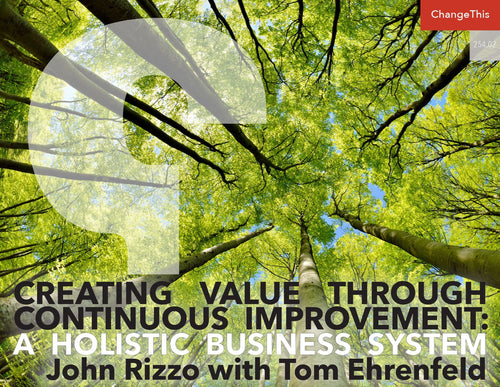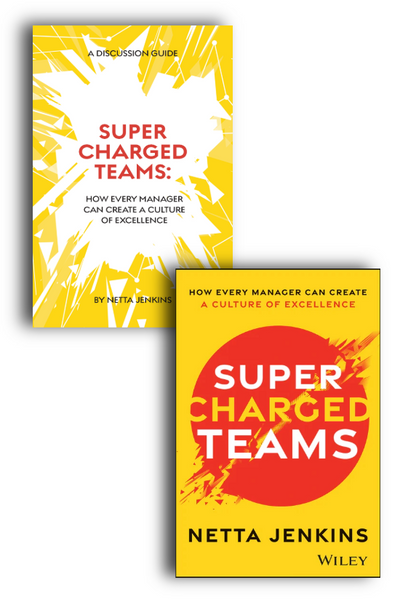The Three Pressure Traps
Like death and taxes, pressure is a certainty.
It’s there in the moments that bend the arc of our life’s path like a critical exam, a big presentation, or a split-second yanking of a child out of harm’s way, and it’s a looming presence in the longer periods that test our resilience as we care for a sick parent, grind through an intense project at work, or pursue a change in career. How we navigate pressure in key moments and over the long haul has a huge impact on the trajectory of our life and how much we enjoy the journey.
Most people look at pressure as a nasty by-product of life—as a necessary evil to be managed. But pressure is power. If you look at the environments where exceptional human performance occurs—the Olympic Games, hospital operating theaters, the first few weeks after a new baby arrives—all of them are accompanied by significant pressure. You don’t get high performance without pressure.
Thriving in a world awash with pressure requires an understanding that trying to push pressure away only magnifies its impact. It is better to recognize that there is power in pressure that can be put to great use or, left unchecked, can burn the place down—and to learn how to embrace pressure and channel its ragged energy productively.
WHAT IS PRESSURE?
Pressure requires two things to flourish: importance and uncertainty. Any time I am doing something that matters to me and I don’t know how it will turn out, I will experience pressure. The higher the volume of important, uncertain things I face, the more intense the pressure will be. This simple combination of three factors can be summarized as an equation:
PRESSURE = IMPORTANCE X UNCERTAINTY X VOLUME
The multiplication signs are deliberate. The more important something is to me, the less uncertainty I require to experience pressure. For example, a $5 lottery ticket with a 1% chance of success creates a lot less pressure than a life-or-death medical procedure with a 95% success rate. Similarly, if volume is high enough, all that is required for pressure to become intense is a low hum of importance and uncertainty.
What distinguishes pressure from the related concept of stress is a necessity to act. We can experience stress as by-standers—watching a child in a championship baseball game or biting our nails as we await the outcome of a loved one’s job interview—but pressure is found in the situation itself: when we are playing in the basketball game or being interviewed ourselves. Put simply, pressure is the need to act in important, uncertain circumstances.
THE THREE PRESSURE TRAPS
Pressure is a double-edged sword that can provide us with super-powers like extreme focus, endurance and drive. And, as most of us have experienced, it can lead to choking, exhaustion, and physical and mental distress. What makes the difference is an understanding of the ways we fall into the traps of importance, uncertainty and volume. The research I undertook in writing The Power of Pressure revealed that there are three main traps that derail people under pressure—one for each component of the equation. The three traps are:
IMPORTANCE | THE PURPOSE TRAP: In 2009, Simon Sinek taught us to ‘Start With Why’—an enduring lesson that has had a seismic impact on how we think about the role of purpose in human motivation. When we connect with why something is important to us, it provides tremendous fuel for the journey over the long haul.
The corollary to this is that the more meaningful and important something is to me, the more it has the potential to create pressure. Importance is, after all, the first element of the pressure equation. In the immediate lead up to peak pressure moments, importance can be stifling. Consider the sales rep who can’t sleep the night before a big pitch meeting because she is so focused on why it matters to her: how crucial the deal is during a tough quarter for the firm, the early promotion that could be at stake, the extra income she would earn and the impact it could have on her family. The more she thinks about these things, the more pressure she feels, the more restless she becomes, and the harder it is to fall asleep. She has fallen into the importance trap: the 'why' is all too clear to her, in fact it’s all she can think about.
At the heart of the importance trap is a biological narrowing of focus that happens under pressure which trains our attention solely on what we might gain or lose in the moment. Escaping the importance trap requires seeing things in perspective—in essence, working to deflate the over-sized importance that we can layer on to our peak pressure situations. This starts by focusing yourself on one question: what’s not at stake?
When we consciously redirect our attention to all of the things that will stay the same regardless of the outcome—we start to gain some equilibrium. For the sales rep, this might mean a focus on her family, friends, and loved ones. She might consider that she will still have her career and financial stability. None of these things are dependent on the outcome of one presentation. As she starts to see importance in balance, she begins to escape the trap.
In short: connecting with the importance behind something is vital to long-term motivation, but when performance is imminent, we need to switch gears and actively work to put importance in perspective—focusing on what will remain constant regardless of the outcome.
UNCERTAINTY | THE DIRECT ACTION TRAP: In peak pressure moments, one of the most effective things we can do is identify where we have control and take direct action immediately. Regardless of the choice we make, the very act of making a choice and exerting control begins to alleviate uncertainty, and therefore pressure.
Because direct action is so effective in peak pressure moments, it often becomes a default response for high performers. When uncertainty exists, they act. This productive response becomes a trap, however, over the long haul. Attempting to tame all of the uncertainty in our lives through the superhuman exertion of control is a sure-fire way to magnify pressure over the months and years.
Escaping the direct action trap means coming to terms with the limits of control and learning to embrace the inevitable uncertainty that accompanies life. This ability to embrace uncertainty comes from the conscious cultivation of two seemingly contradictory mindsets:
- Accepting that the future is uncertain, unknown and unknowable; AND
- Having faith that everything will work out okay in the end.
When we recognize that we cannot control the future and simultaneously hold to a faith that things will work out if we apply ourselves diligently, we begin to open ourselves up to surprises and become less fixated on what we can’t control.
One CEO I woke with talked about going through a period of grinding pressure battling her Board of Directors over strategy. One day on a long walk, after months of exertion, a single word came to her—loud and clear: “enough.” It was her cue to accept the limits of control—to stop trying to push, and to accept that things might work out differently than she wanted, but that was okay.
VOLUME | THE TIME MANAGEMENT TRAP: When pressure is coming from the sheer volume of tasks on our plate, one of the obvious solutions to turn to is time management. If we can get things done more efficiently, we think we’ll start to feel less overwhelmed.
But time management is a trap. What happens to people who get really good at time management—do they get more volume or less volume? I’ve asked this question to thousands of people and the answer is unanimous: more volume. Time management is a fantastic productivity strategy, but it’s not a good strategy for reducing pressure. It simply sets you up to carry a heavier and heavier load.
Let’s imagine that you open your bedroom closet one day, and clothes come tumbling out—overflowing from every shelf and drawer. “Okay,” you say to yourself “I have way too much stuff to fit in this closet—time to take action.” Time management is the equivalent of getting out the sledgehammer and starting to build a bigger closet so that you can hold more clothes. Instead, we want to take a page from tidying guru Marie Kondo and begin to sort through the stuff in our closet to determine what to keep and what to discard.
Marie Kondo’s KonMari method of tidying is predicated on holding each item in your hands and asking yourself “does this spark joy?” If it does, it stays in the closet. If not, it gets the boot. Escaping the time management trap requires taking a similar approach to the various sources of pressure in our lives. Hold each of the major items creating pressure for you in mind, and consider three questions:
- Is this helping me grow? Is this source of pressure something that is moving me forward on my life path.
- Is this helping or hurting my performance? When I consider the major areas that I need to perform in currently (job, father, school, etc.) is this pressure helping or hurting that performance.
- Will abandoning this lead to regret? If it isn’t helping me grow or helping performance, will abandoning this lead to regret? (for example, submitting my taxes could be a source of pressure that is neither helping me grow nor helping performance— but simply ignoring it will probably lead to regret)
Unless significant regret awaits, chuck the pressures that aren’t leading to growth or performance, and ideally both. Don’t simply try to accommodate them through better time management.
I’ve asked hundreds of leaders about the most pressure they’ve ever faced. Universally, their internal accounting of how they handled these periods matters deeply to them. In retrospect, our highest-pressure moments can be sources of tremendous satisfaction or tremendous regret.
When groups of leaders in organizations or teams come together to tackle periods of grinding pressure together and emerge with the satisfaction of having risen to the challenge, it provides a massive lift to organizational engagement, and ultimately results.
When we see our biggest moments in perspective, embrace inevitable uncertainty and are deliberate around the sources of pressure that we accept into our lives—we set ourselves up for a life that is delightfully unpredictable but with a clear sense of purpose, direction and energy.
So—my challenge to you is to change how you view pressure. To start to see pressure as a positive force. To lean into it with a sense of challenge, to commit to using the energy under pressure productively to fuel performance, and to sidestep the three traps that can derail you. It will change your life for the better.
ABOUT THE AUTHOR
Dane Jensen is the CEO of Third Factor, an acclaimed speaker, an instructor at Queen’s University and the University of North Carolina, a regular contributor to Harvard Business Review, and the author of The Power of Pressure.
Dane oversees Third Factor’s delivery of leadership development programs to leading firms across North America including RBC, Uber, Twitter, the USGA, The Home Depot, and others.
His book, The Power of Pressure: Why Pressure isn’t the Problem, it’s the Solution (HarperCollins), is an essential guide to thriving under the demands of our pressure-packed world.











































